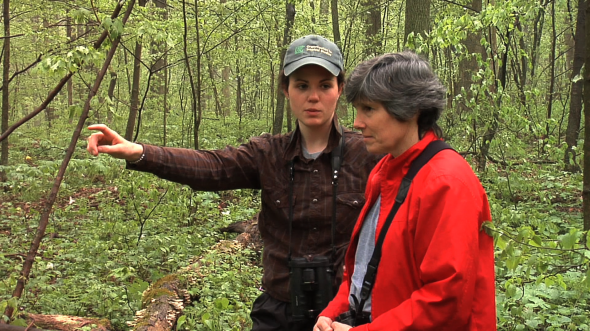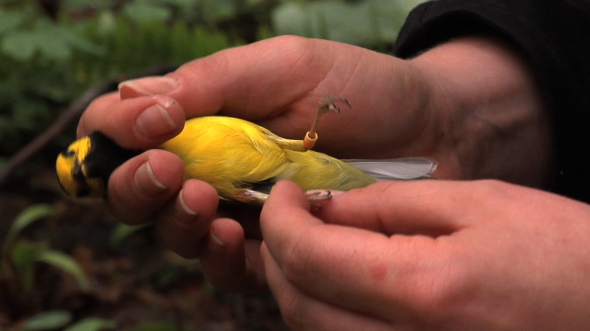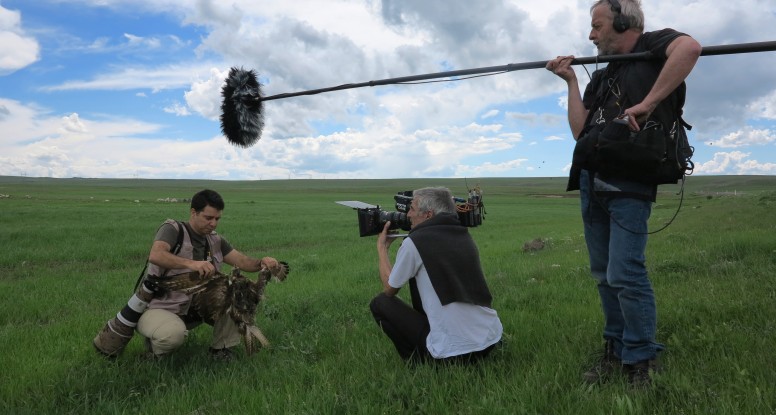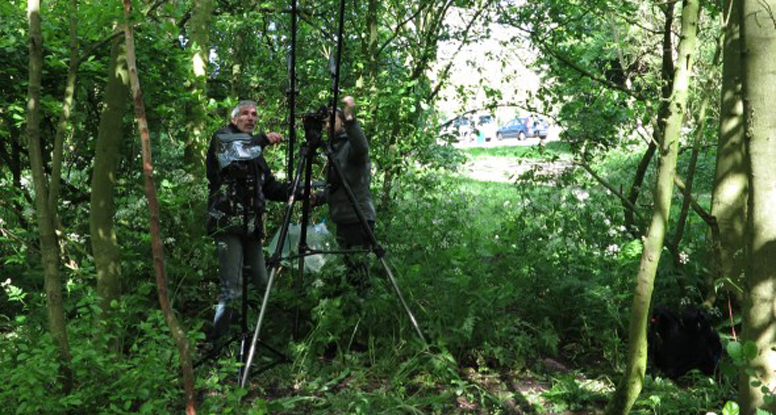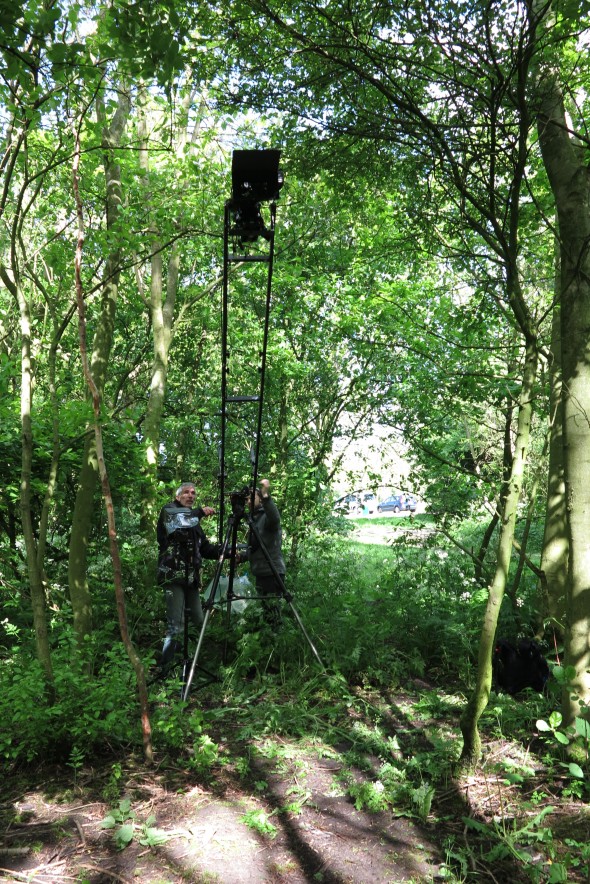 Director Su Rynard escaped from the edit suite to discuss SongbirdSOS on The Green Divas Radio Network. (Su’s interview starts 22 minutes into the show) The Green Divas Radio show is a one hour weekly digital radio broadcast, which offers listeners low stress ways to love and live a deeper shade of green. Host Megan McWilliams and her partner Lynn Hasselberger consider themselves women with a mission for a more sustainable healthy planet. Humour, credible information and some awesome publishing and marketing skills are what The Green Divas bring to environmental issues. You can hear the podcast featuring Su talking about our film in the Green Divas link above or through iTunes.
Director Su Rynard escaped from the edit suite to discuss SongbirdSOS on The Green Divas Radio Network. (Su’s interview starts 22 minutes into the show) The Green Divas Radio show is a one hour weekly digital radio broadcast, which offers listeners low stress ways to love and live a deeper shade of green. Host Megan McWilliams and her partner Lynn Hasselberger consider themselves women with a mission for a more sustainable healthy planet. Humour, credible information and some awesome publishing and marketing skills are what The Green Divas bring to environmental issues. You can hear the podcast featuring Su talking about our film in the Green Divas link above or through iTunes.
Dr. Bridget Stutchbury, Ornithologist and author (Silence of the Songbirds) was one of the first scientists to use light logger geolocators to track tiny songbirds. Watch this exclusive SongbirdSOS video of Bridget retrieving a geolocator from a Hooded Warbler for the first time.
Bridget told us how it came about…
I started tracking migratory songbirds in 2007, after discovering that light-logger geolocators had been miniaturized to only 1.5g by the British Antarctic Survey. For the first time ever it was possible to attach this device to songbirds and, if they returned the next year, re-construct their start-to-finish migration routes and timing. At this size it was only safe to track relatively large songbirds that weighed over 50 grams but most songbirds weigh far less than 50 grams. As with any technology, the geolocators were soon made even smaller, allowing researchers to track smaller songbirds.
In 2010 I had the good fortune to test the smallest tags at that existed at that time (0.6g). The tags were built by James Fox from the British Antarctic Survey. I wanted to know if it was possible to track warblers, which typically weigh less than 15g. In the spring of 2010, after receiving permission from the US Banding Lab to do a pilot study, I caught five Hooded Warblers at my long-term study site in northwestern Pennsylvania. It was with some trepidation that I gave these little birds a relatively large piece of luggage to carry for the next year. I followed them carefully over the next months to make sure they were healthy.
You could not tell that a male Hooded Warbler was carrying a geolocator unless you happened to get a really good look at his back. They sang vigorously, chased other males, mated with their females, and all five males successfully raised a family. That August, just before they were about to depart for their winter-time migration, I recaptured three of the males and I was pleased to notice that their weight was healthy and that they were moulting their feathers normally.
Then came the long nine month wait. The next year two of the five males returned to re-claim their territories in May and seemed no worse for the wear. Amazingly, Director Su Rynard and her SongbirdSOS documentary crew was there when we captured the first warbler ever tracked with a geolocator! After analyzing the light data I discovered that this bird, 2430-41205, had flown south to the Florida panhandle, across the Gulf of Mexico, and spent the winter in central Nicaragua. In spring, he flew up to the Yucatan peninsula, across the Gulf of Mexico and up the Mississippi River valley back to his exact same 100m x 100m territory in Pennsylvania. Even after tracking several hundred songbirds, I still find it amazing that such a small bird can travel so far and with pinpoint accuracy.
What become of this infamous bird? Bridget’s colleague Dr. Ron Mumme from nearby Allegheny College has been studying Hooded Warblers in her backyard forest ever since. He reports that this bird survived to make a second round-trip the next year and again nested successfully, although he has not been seen since.
The second Hooded Warbler Bridget tracked also wintered in Nicaragua and has nested on the same breeding territory every year since 2010. He was at least two years old when first banded, which means he’s flown the 7000 kilometre round-trip at least four times in his lifetime for a total of 28 000 kilometres!! He wasn’t spotted in 2014, and a new male has laid claim to his territory.
Bridget reminds us that Aristotle believed that migratory swallows buried themselves in the mud over the winter like frogs. In many ways that seems far more likely than a little 12 gram bird flying over half-way across the globe.
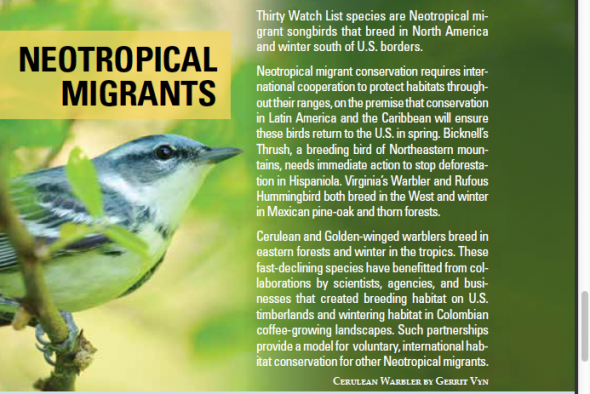 The State of the Birds report is out. The report tries to mitigate the drastic news about further declines and more ‘red listed’ species with Conservation success stories. What does this mean for Songbirds? The news is not great, for forest songbirds, nor for neotropical migrants.
The State of the Birds report is out. The report tries to mitigate the drastic news about further declines and more ‘red listed’ species with Conservation success stories. What does this mean for Songbirds? The news is not great, for forest songbirds, nor for neotropical migrants.
“The eastern forests indicator for 26 obligate breeding birds shows an overall drop of 32%, with a continued steady decline since 2009. Species dependent on either young forests (such as Golden-winged Warbler and Eastern Towhee) or mature deciduous forest (such as Wood Thrush and Cerulean Warbler) are showing the steepest declines. Because 84% of eastern forests are privately owned, timber companies and other forest owners can greatly benefit bird populations by maintaining large forest blocks and participating in sustainable forestry initiatives.
The western forests indicator, based on 39 obligate breeding species, has declined nearly 20% and has continued to decline since 2009. More than half of western forests are on public lands. Species dependent on oak and pinyonjuniper woodlands (such as Oak Titmouse and Pinyon Jay) are showing the steepest declines. As in the East, both early successional species (such as Rufous Hummingbird and MacGillivray’s Warbler) and mature forest species (such as Vaux’s Swift and Cassin’s Finch) are declining.”
I feel very fortunate to have encountered two of the songbirds mentioned above on the SSOS filmmaking journey. We recorded a Golden-winged Warbler in Costa Rica with Alejandra-Martinez-Salinas and a Wood Thrush in Waterloo Ontario with Lyle Friesen. On the downside, filming a Cerulean Warbler was impossible, as their numbers are way down, and the State of the Birds report, like our film SongbirdSOS, helps us understand why this is so.
“Thirty Watch List species are Neotropical migrant songbirds that breed in North America and winter south of U.S. borders.
Neotropical migrant conservation requires international cooperation to protect habitats throughout their ranges, on the premise that conservation in Latin America and the Caribbean will ensure these birds return to the U.S. in spring. Bicknell’s Thrush, a breeding bird of Northeastern mountains, needs immediate action to stop deforestation in Hispaniola. Virginia’s Warbler and Rufous Hummingbird both breed in the West and winter in Mexican pine-oak and thorn forests.
Cerulean and Golden-winged warblers breed in eastern forests and winter in the tropics. These fast-declining species have benefitted from collaborations by scientists, agencies, and businesses that created breeding habitat on U.S.timberlands and wintering habitat in Colombian coffee-growing landscapes. Such partnerships provide a model for voluntary, international habitat conservation for other Neotropical migrants.”
May 27. 2013 Kars Turkey
Çağan and road kill Near Kars Turkey
Dr. Çağan H. Şekercioğlu is a conservation ecologist at the University of Utah, but it’s his field-work in his native Turkey that got us excited about including him in SongbirdSOS. Our trip to film with him near Kars was C R A Z Y. Cagan certainly is a guy on the go – a force to be reckoned with. We had just met and we were traveling with him in our rented mini van and he suddenly demanded that we stop immediately! He jumped out of the car, grabbed his camera, and began photographing. He had spotted a rare Egyptian vulture. (This is a man who has a bird list nearly 600 species long). The vulture was circling road kill. The road kill being another bird. So we all jumped out filmed him telling us this story.
Filmmakers Blog. May 21, 2013
In a quiet area of a wooded park, Hans Slabbekoorn and his students play previously recorded traffic sounds to birds. Their goal is to see if the birds “change their tune” to sing above the noise.
I couldn’t help but wonder what the birds would see when they would look down at these crazy humans with speakers and other audio recording devices.

